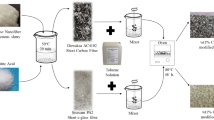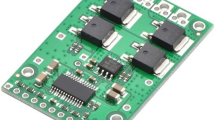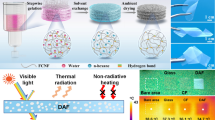Abstract
Porous titanium fibre materials with different structural parameters were prepared by vacuum sintering method. The thickness, porosity and wire diameter of prepared materials were investigated to understand the effects of structural parameters on pool heat transmission performance of titanium fibre porous material. As a result, better heat transfer performance is obtained when overheating is less than 10 °C. In addition, when the wire diameter is smaller, the heat transfer is better. However, when superheating is above 10 °C, heat transfer performance can be improved by increasing the wire diameter. Moreover, thickness influences the superficial area of the prepared material and affects the thermal resistance when bubbles move inside the material; superficial area and thermal resistance are the two key factors that jointly impact the heat transfer in relation to the thickness of the materials. Experimental results also show that the materials of 3 mm in thickness exhibit the best performance for heat transmission. Furthermore, changes in porosity affect the nucleation site density and the resistance to bubble detachment; however, the nucleation site density and the resistance to bubble detachment conflict with each other. In summary, the titanium fibre porous material with a 50% porosity exhibits suitable heat transfer performance.
Similar content being viewed by others
References
B. H. Smith, S. Szyniszewski, J. F. Hajjar, B. W. Schafer, S. R. Arwade, J. Construct. Steel Res. 71 (2012) 1–10.
C. Y. Zhao, Int. J. Heat Mass Transfer 55 (2012) 3618–3632.
H. J. Zhang, Z. P. Zou, L. Qi, H. X. Liu, Procedia Eng. 27 (2012) 752–761.
Y. Mahmoudi, M. Maerefat, Int. J. Therm. Sci. 50 (2011) 2386–2401.
W. Pakdee, P. Rattanadecho, Appl. Therm. Eng. 26 (2006) 2316–2326.
S. P. Chen, H. Y. Li, G. Q. Chen, Cryog. Supercond. 35 (2007) 298–303.
J. Y. Huang, Z. G. Qu, D. G. Li, Z. G. Xu, W. Q. Tao, CIESC Journal 62 (2011) S1, 26–30 (in Chinese).
H. Zhi, J. L. Zhu, J. Z. Wang, Q. B. Ao, J. Ma, A. J. Li, Z. G. Xu, Hot Working Technology 43 (2014) No. 18, 82–84 (in Chinese).
F. Arbelaez, S. Sett, R. L. Mahajan, in: 2000 National Heat Transfer Conference, Pittsburgh, Pennsylvania, 2000, pp. 759–767.
L. T. Chen, H. W. Zhang, Y. Liu, Y. X. Li, Acta Metall. Sin. 48 (2012) 1374–1380 (in Chinese).
S. Sarangi, J. A. Weibel, S. V. Garimella, Int. J. Heat Mass Transfer 81 (2015) 103–113.
S. H. Liu, Z. P. Xi, H. P. Tang, X. Yang, Z. H. Zhang, Q. M. Liu, J. Iron Steel Res. Int. 21 (2014) 849–854.
S. F. Liu, Q. M. Liu, H. P. Tang, X. Yang, Z. H. Zhang, Mater. Rev. 28 (2014) 122–129 (in Chinese).
Author information
Authors and Affiliations
Corresponding author
Rights and permissions
About this article
Cite this article
Liu, Sf., Li, A., Ren, Yj. et al. Heat transfer performance of porous titanium. J. Iron Steel Res. Int. 24, 556–560 (2017). https://doi.org/10.1016/S1006-706X(17)30083-3
Received:
Revised:
Accepted:
Published:
Issue Date:
DOI: https://doi.org/10.1016/S1006-706X(17)30083-3




